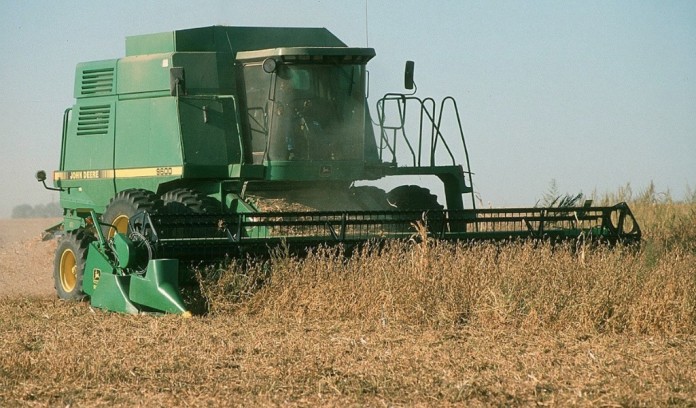We don’t see corn and soybeans trading at complete odds very often, but we saw it Monday, May 23. July corn futures finished the day up three-and-a-quarter cents, while the July soybeans were down 15-3⁄4!
Traders fell over themselves finding reasons for the differences, but they are hard to explain. USDA Planting Progress Reports would make one think the markets were backward.
Bean planting is lagging slightly in the nation as a whole, but good progress was made last week. We went from 36 percent planted to 56 percent, which is actually ahead of the 52 percent average.
Local progress
Ohio, however, is well off that, and getting to be a problem. We went from only ten percent to 22, but 46 percent is average. The corn market makes more sense, but only if Ohio were typical.
In Ohio we are lagging badly, but thankfully not so much in extreme northeast Ohio. One does not have to go very far south or west to run into desperate farmers, however. Corn planting in Ohio was at only 34 percent last week, but we improved to 51 percent this week.
The problem is that we are normally at 66 percent, and we all remember the fast pace last year this time when we were at 84 percent. The nation, meanwhile, has gotten up to the 86 percent number, right at the average of 85 percent planted.
Speculation
That means, if the market were just following the planting, corn prices should be soft. In fact we are trading near the top of the recent cycle. Prices for corn and beans seem to be more a function of the mood of the speculative traders.
The specs have been getting out of soybeans recently, and the price losses reflect that mood. Prices moved higher on fear, as odd political events like the on-again-off-again impeachment of the Brazilian president left us wondering about the value of Brazilian currency and soybeans.
Add in odd weather events, like too much rain in some areas and too little in others, and we defined the volatility of the last month or so.
Soybeans have actually been on the uptick for months, since the low of $8.62 on March 2. We have rallied almost $2.30 to the high of $10.91-1⁄2 on May 10, with the big strength the last month of that.
Since then we have been sideways in fairly large range until the last two days. Monday, as I said, we were down almost 16 cents on the July. In early Tuesday trading we are down nearly nine cents, so the last two days now account for a 25-cent break as the specs take a breather.
As the calendar pages turn, we will focus less on catching up planting in Ohio, especially since the market looks at the nation as a whole and will discount Ohio problems. Crop conditions. The focus will turn to crop conditions, which are lagging for a larger area.
We have been cool, except for the last couple of days, and the crops are not jumping out of the ground. At my house we had one morning of snow squalls and one morning of hard frost last week.
I drive by fields that have been planted for most of two weeks and can only think I see green rows starting. As we shift from planting to thoughts of marketing, we will worry that we have missed the boat on beans.
Certainly any time we see a big move, then a break, we have to think the top might be in. If weather turns favorable and the crops do jump, we likely have seen the top in beans.
Showing improvement
The corn price, however, was surprising. It is hard to explain why prices have improved, even though they are disappointing.
The biggest factor recently has been the USDA Supply and Demand Report of May 10, which dropped our 2016 carryout by 59 million bushels. This was not a large amount, but it was opposite of expectations.
The market expected carry to grow to 2.253 billion bushels, but it fell to 1.8.03 billion. Now that surprise has been digested, and the market has to find another reason to rally.
In Ohio it feels like that should be delayed planting, but we are the exception. Now we will focus on crop conditions and weather.
Unfortunately, this is the time of year when betting on higher prices is to bet against our own production. We are better with big, cheap crops than small, high priced ones.













